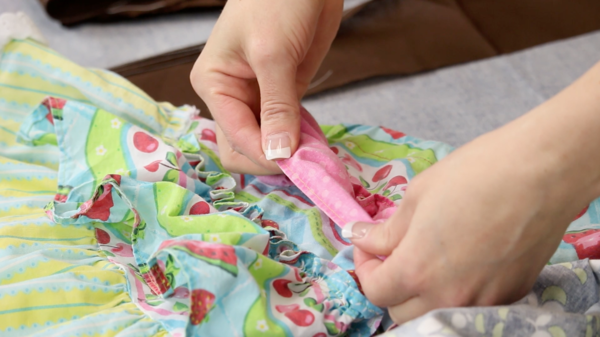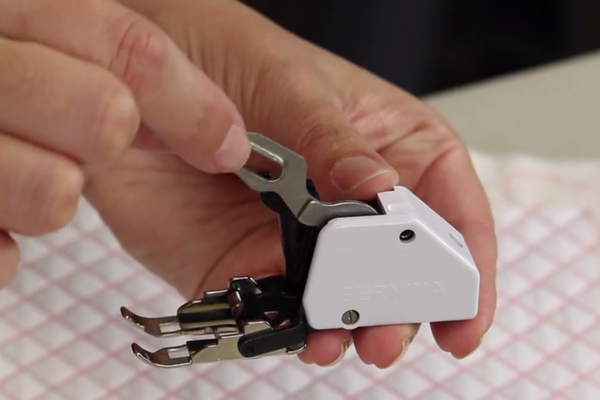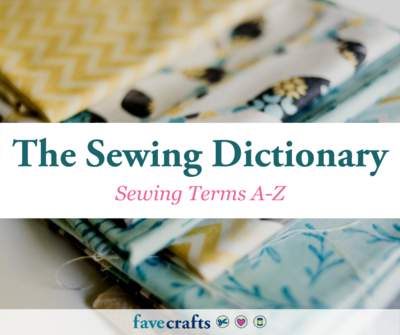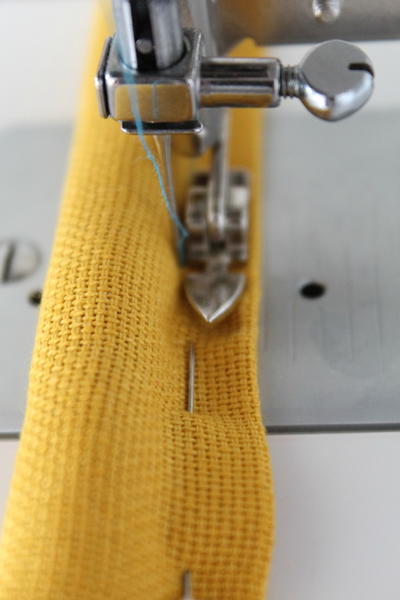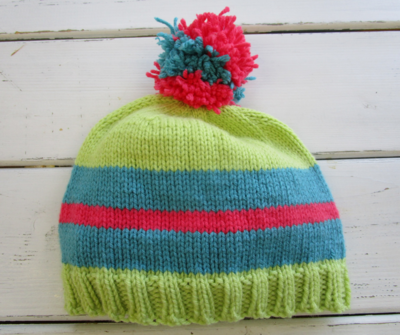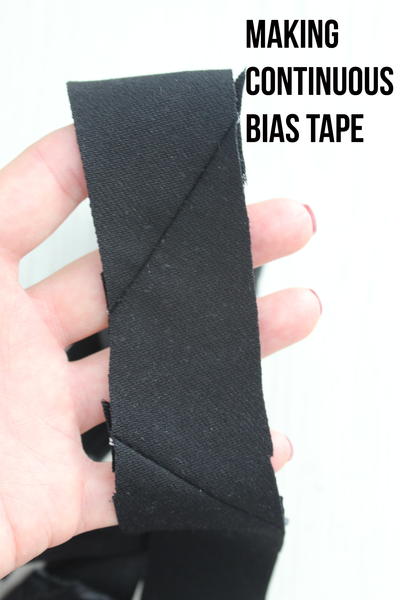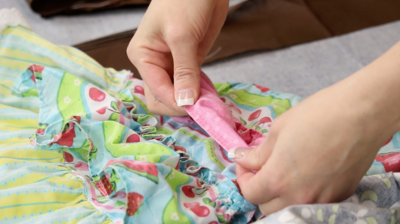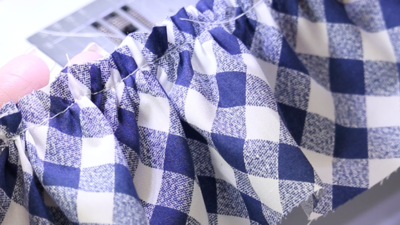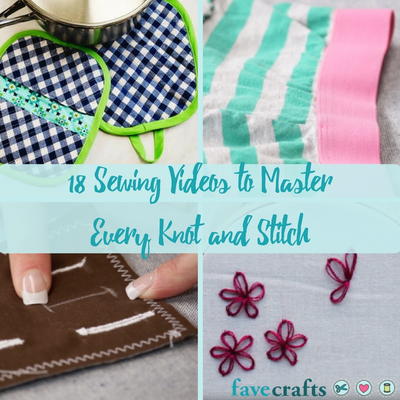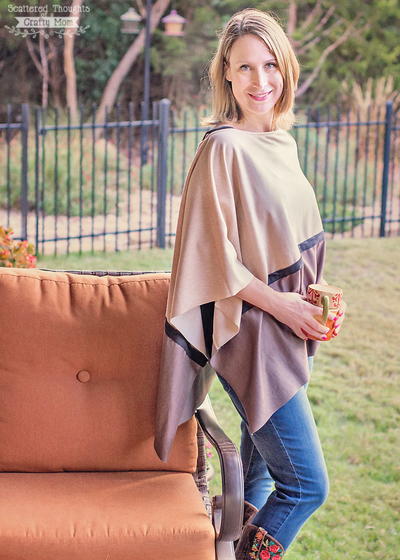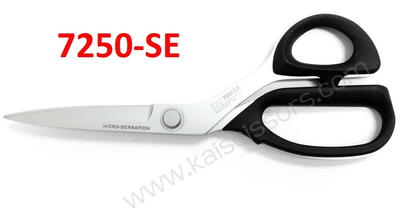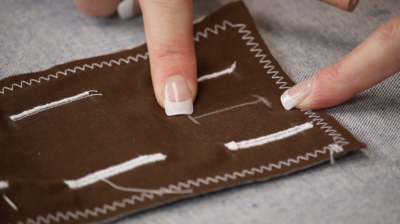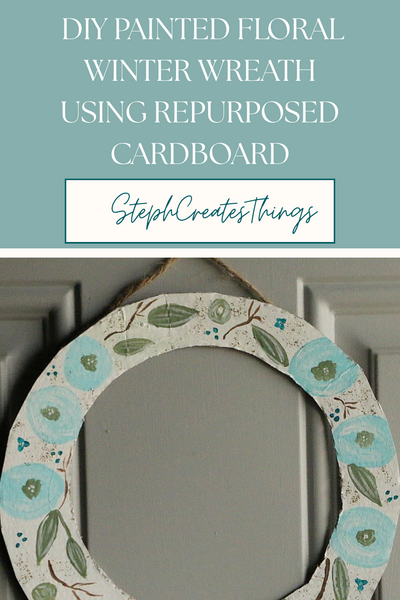The Sewing Dictionary (Sewing Terms A-Z)
This glossary of sewing terms is a helpful resource for beginner and advanced sewist alike.
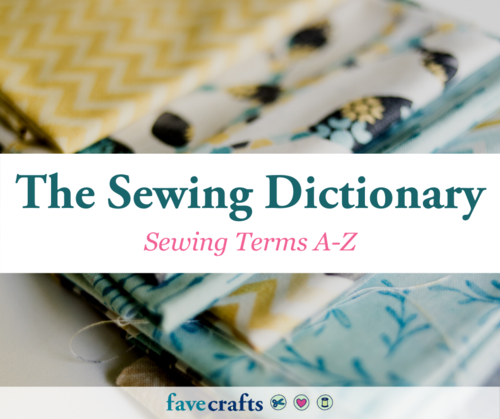
Our Sewing Dictionary has everything beginners need to know from different types of sewing methods to basic sewing terminology. Perfect for beginner and veteran sewists alike, this extensive resource of sewing terms from A-Z should be your first stop to deciphering the sometimes confusing jargon in the wonderful world of fabrics and sewing. This glossary of terms ranges from the definition of a sewing pattern to the different parts of the machine. We like to think we've covered all of our bases; but if we're missing anything you want to know more about, let us know!
A
Anchoring Stitches - These stitches are used to secure the material in the seam and prevent your stitches from coming undone. They can be achieved by knotting off your stitches prior to finishing a seam.
Applique - An embellishment that is sewn or ironed onto another piece of fabric
Armscye - Another word for armhole
Arrowhead Stitch/Arrow - Triangular stitch used as decoration when stitched loosely or to reinforce strain areas of a garment when stitched tightly
Awl - A hand-held tool for poking holes in fabric or pushing out corners
B
Back-tack (back stick) - Stitching in reverse to secure a line of stitching
Backstitch - A stitch that doubles back on the last stitch and acts to secure seams and mend garments
Bar Tack - Short thread reinforcement
Basting stitch (baste) - A long, quick stitch used to hold fabric in place temporarily
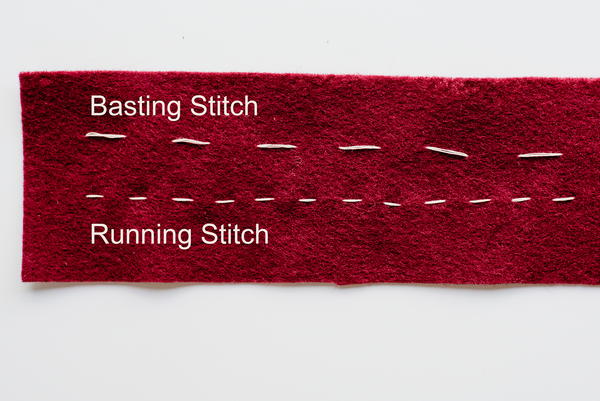
Batting - Filling inside quilt or garment
Bias - The line diagonal to fabric grain. True bias is a cut in a 45 degree angle from edge of fabric.
Binding - Strip of fabric used to cover a seam edge or enclose raw edges. Binding creates a neat finish and a decorative touch
Blanket stitch - A stitch used to finish a fabric edge, such as around a buttonhole or blanket. Learn how to sew a blanket stitch here
Blind Hem Stitch - An “invisible” stitch not meant to be seen on the right side of the fabric
Block - A quilting term for the individual unit of a quilt. Quilts are composed of many blocks.
Bobbin - The spindle or cylinder on which thread is wound in a sewing machine
Bolt - Roll of fabric (can also be kept on rectangular form)
Butting - Placing two fabrics together so they touch but do not overlap
Button Hole - A cut or slit in the fabric that is just big enough for a button to pass through. Watch our video tutorial below for how to sew a button hole.
C
Casing - Fabric channel used to hold waistband elastic or drawstrings in place.
Clean-Finishing - Using a zig-zag stitch to finish a seam, especially hems, for a clean finish.
Clip Curve - A method to make a rounded corner lay flat and not bunch when complete. Using a serger to finish seams eliminates the need for this.
Crimping - Easing fabric into the seamline.
Crossgrain - The line of fabric perpendicular to the selvage edge of the fabric.
Cutting Line - On patterns, the outermost dark line.
Cutting Mat - The "cutting board" of sewing. This mat serves as a smooth surface to cut fabric on that also protects your table/countertop.
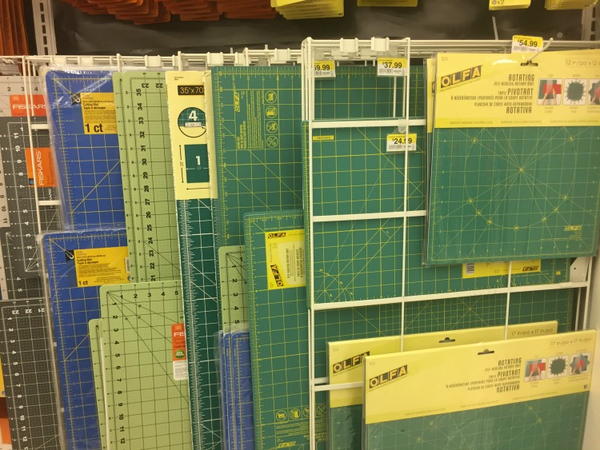
D
Darn - Repairing a hole in a garment, especially socks, with stitches running back and forth over the hole. Darning tools help to keep the fabric taut while darning.
Dart - V-shaped additions to a pattern that create extra fullness in a garment.
Double Hem - When the hem is folded over twice in equal amounts.
Duct Tape Double (DTD) - clever aid for creating garments to perfectly fit a particular body. A body form is created by winding duct tape around the body and then removed as a whole.
E
F
Facing - A piece of fabric sewn onto the rough edge of a fabric, such as at the cuffs or collar, to create a finished look.
Fat Quarter - A quarter of a yard of fabric. This yields a piece of fabric approximately 18" x 22."
Feather Stitch - An embroidery stitch that consists of a line of diagonal blanket stitches worked alternatively to the left and the right.
Feed Dog - The teeth under the plate of the sewing machine that help move the fabric while it is being sewn.
Finger Pressing - On small pieces of garment, where iron pressing is not suitable, using your fingers to open a seam.
Finish Seam - Preventing a seam from unraveling and adding stability by using certain stitches or tools.
Flat Felled Seam - A seam made by sewing the wrong sides of fabric together, trimming one seam allowance close to the seam, turning the other seam under, and stitching over. This is used in pajamas, jeans, and other garments to reduce the seam bulk.
French Seam - A seam that is initially stitched with wrong sides together, then flipped inside and stitched right sides together. This encloses the seam allowance, creating a clean finish on the inside of the garment.
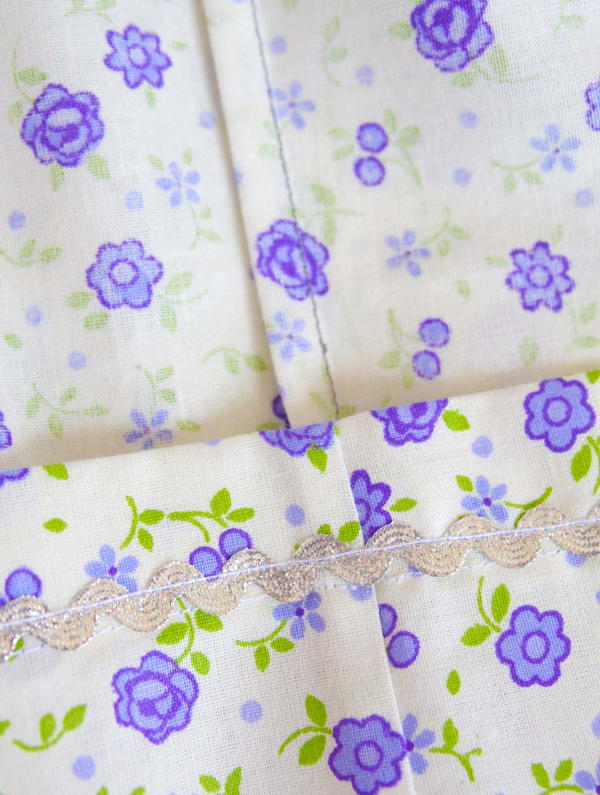
G
Gather - A method to make a long piece of fabric fit with a shorter piece, or to ease a seam to allow the insertion of rounded pattern pieces. Learn how to gather fabric here
Give - The elasticity in a thread or garment
Godet - A triangular piece of fabric inserted in the seamline to provide freedom of movement, such as at a sleeve opening
Grading - Trimming the two layers after a seam is stitched so that they are a different length in order to prevent a ridge showing on the outside of the garment seam. A second definition of graduation in sewing terms is the process of converting a pattern size to a larger or smaller size
Grain - Direction the fibers in the fabric run, parallel to the selvage
Grain Line - The direction of the fabric that runs parallel to the selvage/selvedge
H
Hong Kong Finish - Bias binding enclosed within a seam
Hooks and Eyes - A closure with a small hook on one side and a loop on the other
I
J
K
L
Ladder Stitch - A closure stitch. This invisible hand stitch helps you to close a tear without the stitching showing
Lettuce Edge - A serged edge which is stretched at it is sewn, creating a ruffled edge on the garment. Pictured below
Lining - Often made of a smooth fabric to assist in dressing or simply for decoration, the lining is the fabric on the inside of a garment used to hide the seams and construction of the garment
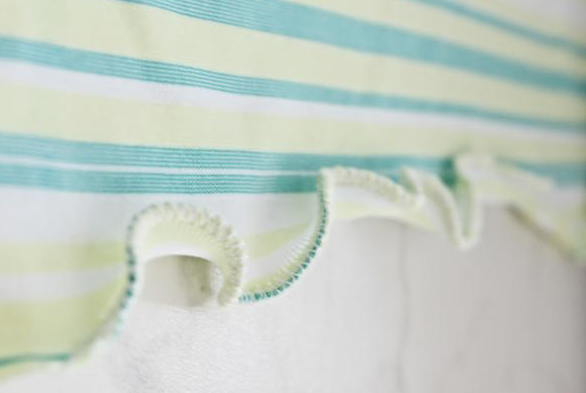
M
Match Point - A moment when the sections are placed right side up so the seams are on top of one another, the seam allowances will line up as a perfect match
Mend - A broad term referring to repairing tears, holes, or splits in a garment
Miter - A method to create smooth 90 degree angles, especially at quilt corners, with a diagonal seam from the corner point to the inside seam
N
Nap - A fabric texture that runs in a specific direction (for example, velvets and corduroys). Nap requires that all pieces be placed and cut in the same orientation. Prints that have directionality may not have a textured nap but also need care when placing pattern pieces
Narrow Hem - A 1/8 to 1/4 inch hem used on lingerie, napkins, and other items needing a very small hen
Notch - Indicated on patterns as a small, dark diamond, this is a short cut in the seam allowance to allow for bend in the fabric at curves or corners
Notion - A general term for any item other than fabric or the machine used in sewing
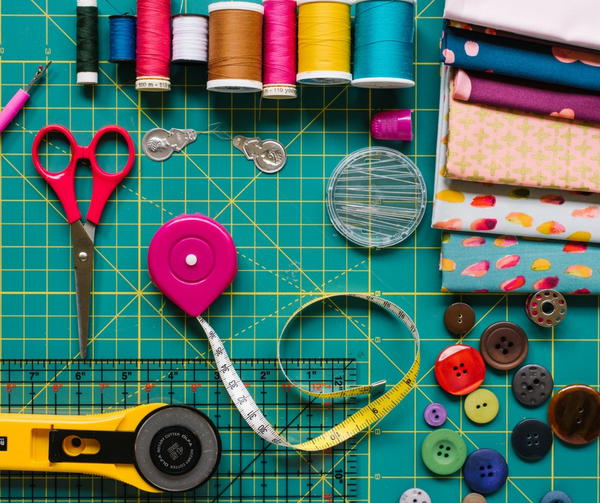
P
Patchwork - When scrap pieces of fabric in different designs, colors, etc. are sewn together
Pattern (Sewing Pattern) - A guide that shows you how to assemble fabric to create something new. Learn how to use sewing patterns here

Pinking Shears - Special small scissors which prevent raveling with a V shape along the cutting edge
Pivot - Leaving the sewing machine needle in the fabric, raising the presserfoot, and turning the fabric on a 45 degree angle, lowering the presserfoot, and continuing to sew. This helps with turning corners
Pre-shrink - Sashing and drying a fabric before sewing to allow the fabric to shrink to whatever degree. If a fabric is not preshrunk before sewing, there may be uneven lines and puckering
Presserfoot - The part of the sewing machine that folds the fabric in place while it is fed through the feed dogs
Prick Stitch - Used on fabrics such as velvet where every stitch shows, this is done with a tiny backstitch on the right side and the remaining backstitching on the wrong side
R
Railroading - Using fabric without a nap or directional design horizontally rather than vertically
Raw Edge - The unfinished, cut edge of the fabric. Note that if left raw, the fabric might fray
Reinforced Seam - To sew right next to a seam to reinforce it, especially in crotch seams
Right Side - The design side of the fabric
Rotary Cutter - A cutting tool, much like a pizza cutter, for cutting straight strips of fabric or pattern cutting.
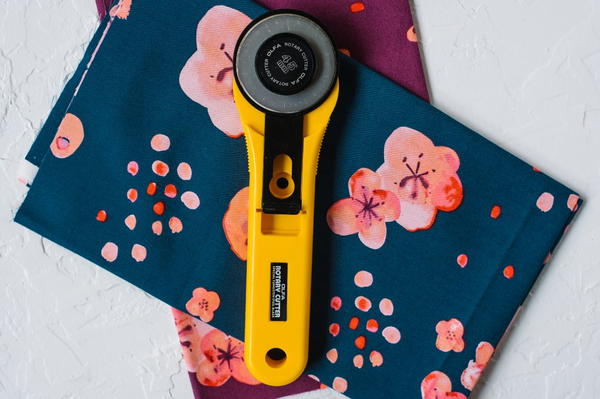
Ruler - For sewing, the most popular ruler is 18 inches long and 2 inches wide
Ruching - The gathered overlay of fabric strips
Running Stitch - A simple stitch made by running the thread over and under the fabric for basting or as a marker for more decorative stitches
S
Salvage/Selvedge (UK) - Woven edge of fabric with manufacturer information or other information. The woven edge of a fabric that runs parallel to the lengthwise grain. When you purchase fabric, it is cut across the crosswise grain, at a 90-degree angle to the selvage.
Satin Stitch - A tight zig zag stitch with very small stitch lengths (just above 0).
Seam - The line where two pieces of fabric are sewn together.
Seam Allowance - Amount of extra fabric added to allow for a seam or the area between the seam stitching and the cut edge.
Serger - A type of sewing machines that stitches the seam, cuts off excess fabric and finishes the seam allowance in one motion. See also "Overlocker"

Sloper - Basic pre-design fabric recording of an individual’s fit.
Stay - Tape added to a garment to keep it’s shape.
Stay-Stitching - A stitch 1/8 inch from permanent line of stitching on a curve to keep the curve from distorting.
Stitching-In-The-Ditch - Stitching in the seam (the ditch) as a form of simple machine quilting or method of understitching.
Straight Stitch - Standard single, forward stitches.
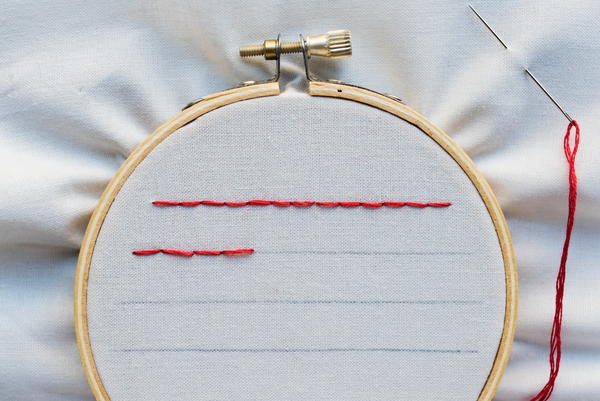
T
Tack(ing) - Temporary stitching to hold material until final stitching is completed.
Tailor’s Tack - A method for marking buttonholes or darts, by drawing two threads in a needle through the fabric layers and then cutting (or snipping them), leaving tails of thread from the top AND bottom of the fabric.
Termination Point - The point where two seamlines end
Thimble - A finger covering that protects the dominant finger of your dominant hand. Learn all about the thimble and its uses here
Top-Stitching - A visible stitch done on the top of an item 1/4 inch from the edge of a seam for stabilization and/or decoration. (Click image below for more)
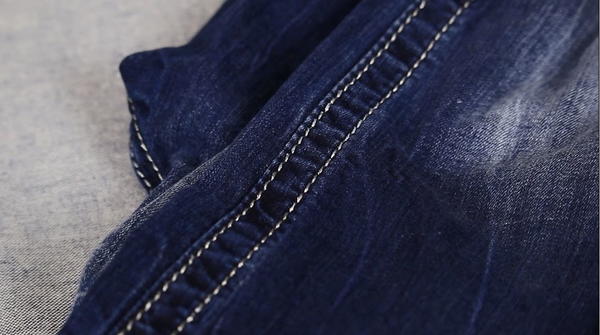
U
W
Warp (Lengthwise Grain): Threads running the length of a woven fabric
Weft (Cross Grain): Thread running perpendicular to the warp, from selvedge to selvedge
Welt: Covering the raw edges of a pocket or other opening by placing fabric (right sides together) over the opening, stitching, turning the top fabric in, and top stitching in place
Whipstitch: A simple running stitch that holds two pieces of fabric together
Wing Needle: A needle with wing-shaped sides to create holes in tightly woven fabric
Wrong Side: The non-design side of the fabric (some fabric has no right or wrong side)

